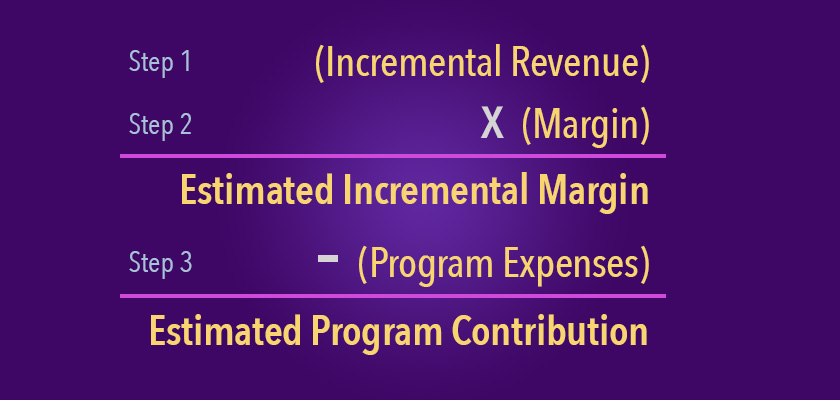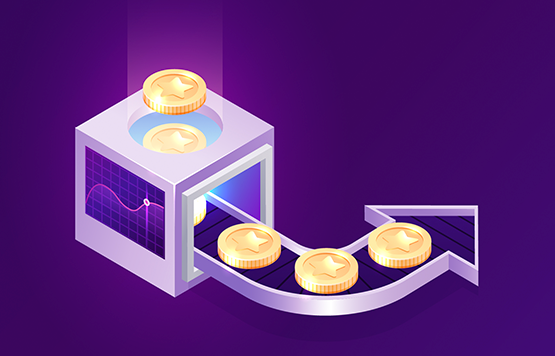Every successful brand needs a profitable customer loyalty program. Companies across industries leverage loyalty programs to identify their most engaged customers, collect behavioral and preference data, and incentivize purchases. Loyalty programs build customer loyalty, and analytics insights help companies know how to best recognize, reward, gain, and retain loyal customers.
The importance of customer loyalty programs in building brand loyalty and understanding consumers cannot be understated, but you also want a loyalty program that increases revenue. If you aren’t receiving returns from your loyalty program investment, your loyalty program isn’t working for you.
Let's make sure your customer loyalty program is meeting your goals and contributing to your bottom line.
Contents
- Is Your Loyalty Program Increasing Revenue?
- How to Measure Your Loyalty Program ROI
- Step 1: Estimate Incremental Revenue
- Step 2: Quantify Incremental Direct Variable Margin
- Step 3: Quantify Program Expenses
- Reward and Soft Benefits Expenses
- Dedicated Program Expenses
- Step 4: Calculate & Review Program Financial Impact
- Formula for Measuring Loyalty Program ROI
- Loyalty Program Cost-Benefit Analysis
- Increase Your Loyalty Program ROI
Is Your Loyalty Program Increasing Revenue?
Loyalty programs can be expensive to implement, and sometimes the startup costs can outweigh the benefits. Building a successful loyalty program that works for you may require a sizeable investment of both money and time. And unless the loyalty program is built with a robust strategy customized for your business, it may not help build customer loyalty or increase revenue.
Did you know that within a three-month period, loyalty rewards program members in the US and Canada spend approximately $100 more on average than non-loyalty members? To build a loyalty program that works for your brand and increases ROI, you need the right loyalty strategy. Once you have the right loyalty program and strategy, it can help build your brand, increase customer loyalty, and show a large ROI for your loyalty program.
How to Measure Your Loyalty Program ROI
How can you measure your brand’s loyalty program’s performance and calculate the return on your loyalty program investment?
To get the most of your brand’s loyalty program, you need to know how your customer loyalty program is currently performing. Beyond happy and loyal customers, your loyalty program should be driving profits. How can you measure your loyalty program’s financial contribution and the return of your customer loyalty investment?
While every loyalty program is unique, Brierley will share a high-level approach for estimating your brand’s loyalty program financial contributions in only four steps.
Step 1: Estimate Incremental Revenue
The first step requires some estimation. The goal is to estimate the incremental revenue your loyalty program is generating from its active members. For simplicity, we’ll assume we’re measuring for a 12-month period.
Summarize the average spending per loyalty member over the 12-month period. If you have multiple loyalty tiers, you may want to do so by tier level. This is the total spend per member.
How do you estimate the revenue generated by your loyalty program? To determine incremental spending, you need to measure against a comparable control.
At Brierley, we use several methods to estimate incremental value. These methods include:
- Control Market: This isn’t typically an option, but if there is a comparable market without loyalty, you can measure average spending, transactions, and order value vs. loyalty markets to gauge incrementality.
- Cohort Analysis: With this method, you analyze the pre-loyalty program purchase behavior of members and identify similar performing customers (cohorts) who are not loyalty program members (typically over 6–12 months) and compare behavior during the program measurement period. Typically, there is a statistically significant lift in loyalty member spending vs. the non-member cohort.
- Regression Model: This method requires a little more analytical horsepower, but essentially it involves building a multi-variate regression model that explains the spending of loyalty program members vs. non-member customers. All independent variables are consistent between the two models — with the “unexplained” variable differential between the two models representing the incremental program revenue contribution. A few technical notes to consider:
- Mixed econometric techniques can work well in concert with one another (e.g., logistic regression for retention, OLS for revenue and/or Poisson for transaction frequency).
- Corrections for selection bias will adjust and stabilize estimates (two-phased techniques like Heckman are now widely used).
Step 2: Quantify Incremental Direct Variable Margin
Now that you have estimated the incremental revenue generated by your loyalty program members, you will need to estimate your incremental direct variable margin.
How do you estimate the incremental direct variable margin? The margin is based on what was earned from incremental revenue estimated during the first step. Note that in most cases, margin is the best measure of incremental program contribution. It’s unlikely that your program is driving incremental fixed costs or additional variable costs for each sale. If so, congratulations! You must have a very robust loyalty program.
If your loyalty program’s financial and customer database is sophisticated enough to capture margin information from member sales at an individual member level, you can use actual margins earned. If not, it’s usually fine to apply an overall average direct variable margin rate for the measurement period.
Step 3: Quantify Program Expenses
The third step is to quantify your loyalty program expenses. But what are the expenses associated with a customer loyalty program?
Loyalty program expenses can be summarized in two categories:
Keep in mind that you should only be counting expenses that are directly incurred because of the loyalty program. In some cases, costs may be shared between your loyalty efforts and other marketing or corporate functions (i.e., communications, customer service support, marketing management). In these cases, you should allocate these costs based on the pro-rata loyalty program level of effort or resource share.
Reward and Soft Benefits Expenses
What are reward and soft benefits expenses? This is the dollar value and cost of rewards redeemed. Brierley recommends tracking the value of rewards both earned and redeemed. The value will be the value to the customer (i.e., $10 reward good toward their next purchase). To be conservative, we recommend setting the cost of a universal dollar-denominated reward redeemed at full value to the member.
However, if your program rewards specific items for set point levels (i.e., 50 points for a free beverage, 100 points for a sandwich, etc.), the loyalty reward should be valued at the price to member but costed/expensed at the variable direct cost of the item redeemed (i.e., menu price of coffee is the value to the member — $2 — but it only costs $.75, the cost of the program).
If you have additional soft or “hard” benefits for your program such as gift wrap, exclusive events, birthday gifts, or other member perks, include the incremental cost for these benefits. Exclude the cost of any benefits available to all customers (not just members)
Dedicated Program Expenses
Dedicated loyalty program expenses are expenses directly related to operating your loyalty program. Examples of dedicated loyalty program expenses include:
- Loyalty Technology Platform(s): Include the annual licensing and support, management, and support fees.
- Amortization of Build: If your program is new or was recently updated, you may be able to amortize the design and build investment over the term of your partner’s contract. Check with your accounting team for more information.
- Dedicated direct marketing: Includes the cost of email, direct mail, SMS, app messaging, and other direct communications solely for the loyalty program.
- Advertising/Creative: Direct advertising/promotion shared costs. This includes dedicated point of sale materials, banners, and promotions with loyalty messaging as a material element. In many cases, loyalty is secondary/tertiary within overall marketing campaigns, so you should be able to negotiate here.
- Direct or Allocated Personnel: To the extent you have dedicated employees supporting the program, or allocated headcount, include their cost here.
- Other Expenses: Depending on your program, include other dedicated expenses incurred on behalf of the program. Some examples include ongoing vendor, agency, or partner support fees, app management and support fees, and employee training.
Step 4: Calculate & Review Loyalty Program ROI
The final step is to summarize and review your loyalty program expenses and ROI. With the above steps completed, you can use the formula below to calculate the estimated return of your loyalty program investment.
Formula for Measuring Loyalty Program ROI

Using this high-level framework, you can estimate your current loyalty program’s bottom line. With this estimation of how your loyalty program is currently performing, you can determine if you need to make changes to your customer loyalty and customer engagement marketing strategies.
Loyalty Program Cost-Benefit Analysis
If your loyalty program isn’t delivering the return you expected, or if you would like an independent review of your program and its potential, Brierley offers a suite of FAST Track consulting services. FAST Track services from Brierley include Program Health Assessment and Program Cost-Benefit Analysis modules so we can measure the health of your program against industry metrics and provide data and recommendations on how best to improve the health of your program.
You can take advantage of the FAST Track Cost-Benefit module by itself or combine it with any of Brierley’s 22 distinct FAST Track modules. With these consulting options from Brierley’s loyalty data and industry experts, you can take your customer loyalty program to the next level.
Increase Your Loyalty Program ROI
Are you receiving the return on your loyalty program investment you expected? What should you do if your loyalty program isn’t working the way you wanted and you need to turn things around?
To learn the answers to these questions and more, contact Brierley today to learn more about our FAST Track consulting services and how to improve the health of your loyalty program.

